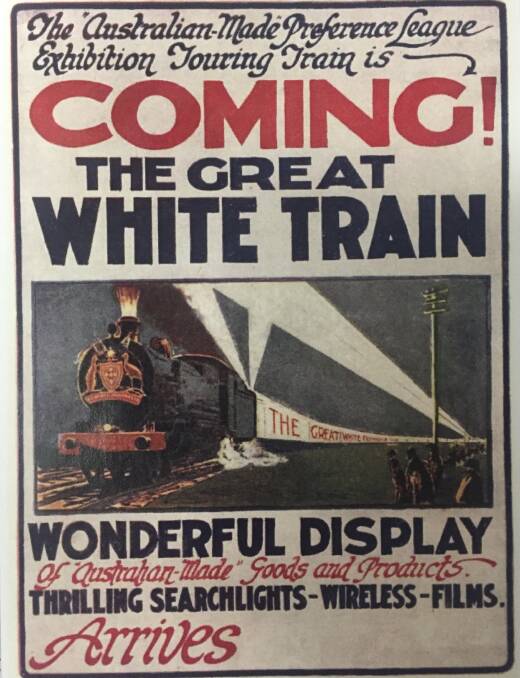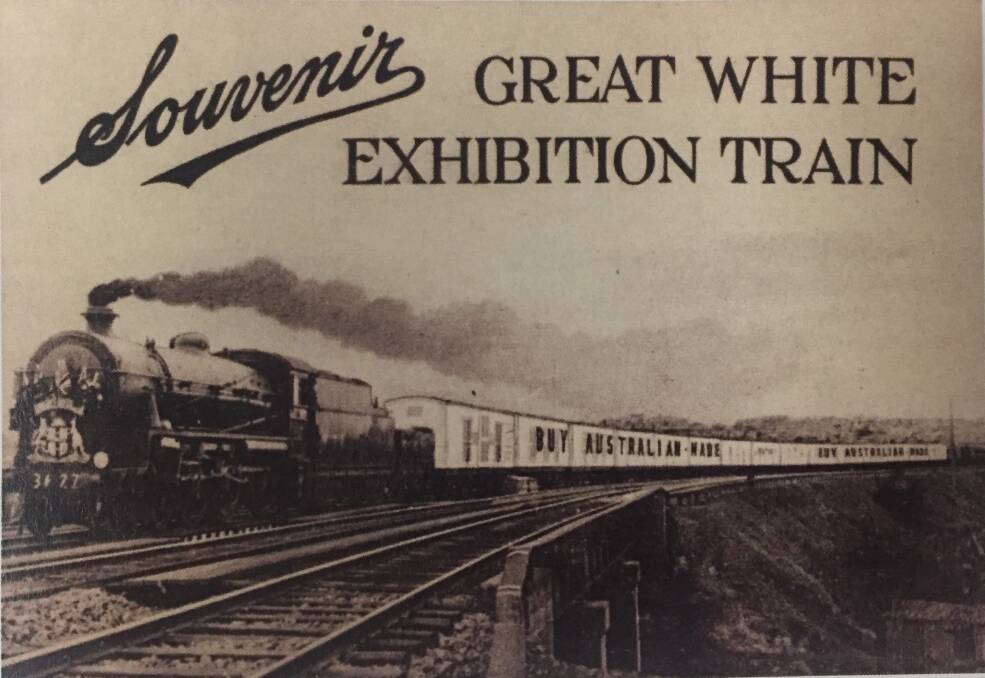
The Great White Train, which toured NSW in 1925-26, was an initiative to encourage Australians to buy Australian made products.
Subscribe now for unlimited access.
or signup to continue reading
Instead of holding a large exhibition in Sydney to promote locally made products, it was decided to have a train that could carry the message to rural areas.
The train started its journey in November 1925 and 11 months later it arrived in the Shoalhaven.
Bomaderry was the selected destination, but the people of Berry were desperate for it to stop there, and when its request was granted, Berry became the first municipality to have two stops on the train’s itinerary.
The big day was Thursday, October 14, 1926. One of the league’s organising committee, Mr WA Howard, visited Berry in advance to discuss with business people how to maximise the impact of the train’s visit.
A prize was offered for the best dressed window that displayed Australian made goods, and it was won by draper and general storekeeper, AF Hale, with Ern Chegwidden second.

A large number of children were at the Berry Railway Station to greet the train when it arrived, and Mayor Alderman John Binks held a civic reception for the train officials.
According to Aldermaan Arthur Packer, the train was “the largest commercial traveller ever to visit Berry”.
The Berry community responded, with 1453 inspecting the 16 carriages during the train’s stay.
Berry stationmaster Mr C Ogg would have been delighted with the visit on two counts. His 11-year-old son Ronald, won a prize for the best essay on the Great White Train, and he provided a description of what was shown in the artistically set up carriages.
He was fascinated by the Akubra display that showed hats in all stages of construction, and the Bonds display that included a towel in the process of being woven. He described the Kellogg’s Cornflakes as “a dainty breakfast food”.
Vice-Regal and Three Castles cigarettes were shown in stages of manufacture through to packing in the air-tight tins of tobacco and cigarettes.
Peaches, pears, apricots and oranges grown in the Murrumbidgee were shown in two-quart jars.
Models included a Newcastle tram, a railway engine that could haul five tons and a model farm with homestead, fowl pens and windmill pumping water.
The largest commercial traveller ever to visit Berry.
- Ald. Arthur Packer

